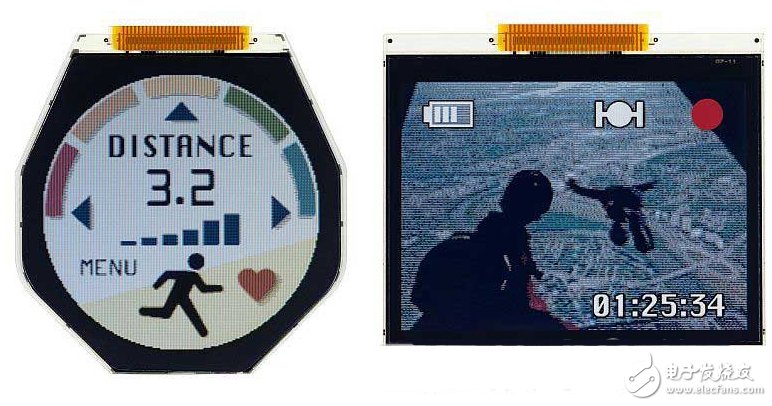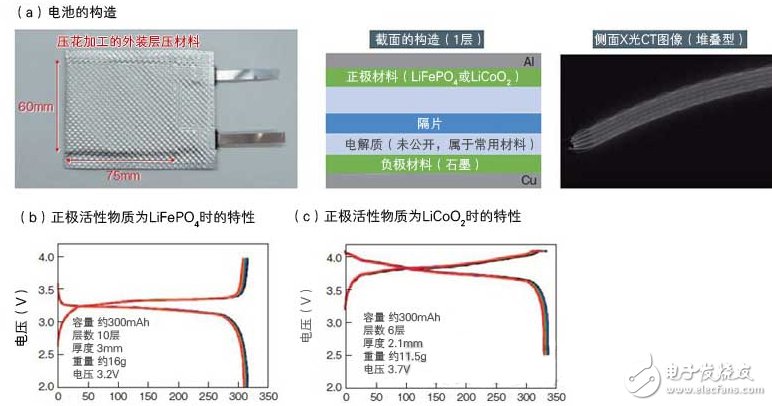From TV to wearable – at the 2014 Display Technology Society and Exhibition, this shift in technology development trends has become apparent. The wearable ultra-low power reflective LCD module has been rapidly put into mass production. Peripheral components of the display also speed up the pace of support for wearables. For example, there has been a bendable battery developed to cope with an organic EL display that can be repeatedly bent. Combines ultra low power consumption with high image quality Japanese monitors began mass production of ultra-low power reflective LCD modules in 2014. The company uses a low-power reflection type without backlights to further reduce power consumption. It also combines the technology of using low-temperature polysilicon (LTPS) technology to maintain image information in a memory embedded in a pixel. "MIP (Memory in Pixel) ". When the still picture is displayed, almost no power is consumed, which prolongs the use time of the wearable terminal. For the problem of reflective liquid crystals, the company has improved brightness and visibility by adopting a newly developed light scattering layer. Through the pursuit of the following three points: (1) does not dazzle, looks like paper; (2) high reflectivity, bright; (3) no rainbow spots and successfully achieved mass production. Figure 1: Ultra Low Power Reflective LCD Module The company also adopted a newly developed light scattering layer in order to eliminate the fine unevenness on the surface of the reflective electrode which causes deterioration of the reflective liquid crystal image quality, in order to make the liquid crystal look white like paper. Battery that can maintain characteristics after bending 10,000 times In order to cooperate with the organic EL display which can be repeatedly bent, the Semiconductor Energy Research Institute of Japan is developing a flexible battery. The battery developed by the company is basically made of the same material as a general lithium ion battery. The capacity of the battery is expanded by overlapping 6 to 12 layers. A problem that exists when the battery is bent and deformed is the difference in displacement between the outer circumference and the inner circumference. In order to absorb the displacement difference, the exterior is made of embossed material. The Semiconductor Energy Research Institute did not disclose the details, except for the installation, it seems that the electrode part has also been improved. Figure 2: Maintaining characteristics after 10,000 bending tests The Semiconductor Energy Research Institute has developed a bendable lithium-ion battery (a). (b) The graph shows the characteristics of the bending test performed 0 times (black), 1000 times (purple), 3000 times (green), 6,000 times (yellow), and 10,000 times (red). (Photo: According to the data of the Semiconductor Energy Research Institute) In order to achieve a battery capacity of about 300 mAh in an area of ​​60 mm & TImes; 75 mm, LiFePO 4 which is safer to use a positive electrode active material needs to overlap 10 layers and have a thickness of 3 mm, and LiCoO 2 needs to overlap 6 layers and have a thickness of 2.1 mm. The company's trial production of the maximum number of layers is 12 layers, the capacity is 600mAh. The characteristics were then evaluated by repeatedly performing a bending experiment with a radius of curvature of 40 mm to 150 mm on the battery. As long as there is demand, the company will also have a radius of curvature of 25mm for wearing on women's wrists. The company will also develop batteries that support multi-directional bending. original Air glow vape, many new style ,direct factory wholesale,High quality,new design. Air Glow Blastoff Shenzhen Ousida Technology Co., Ltd , https://www.osdvape.com

popular in many maofferrtket.
offer sample for you check,please contact with me.